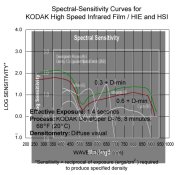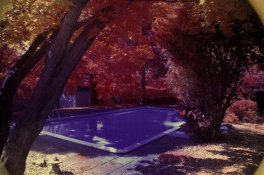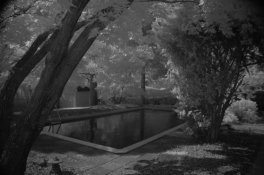More explanation is needed here.
If you look at the spectrogram referenced by AgX, you will see transmission of a crossed polarizer out to 1000 nm. What is not clear is that to get this deep blocking of light, you need to cross two of them (of the exact same type). This blocks no deep red, it is blocking all visible light and allows deep IR. The filter is visibly neutral but virtually wide open in the IR. If you use one of them to control reflections, you get an overall blocking of reflected light and little blocking of UV or IR.
In fact, the filter has about than 50% transmission at 900 nm, which is IR. This is not red. In fact, you will only lose about 1/2 of the light at 900 nm and have complete transmission at 1000 nm. That is a lot of light. Actually, I used a cross polarizer to block visible light with a digital camera and take quite good IR photos with it. If you partially block the visible spectrum, you then can get an EIR type effect combining color and IR using digital.
So, a pair of polarizers can be set to achieve any density neutral density you wish when crossed but be open in the IR region, and a single one is the normal type used on cameras which just merely blocks out unwanted reflections.
With sincere apologies, since EIR is not available I have shot the following:
Left picture, crossed circular polarizers
Middle picture WR IR filter (deep red - #87)
The rightmost photo is the normal (digital) version.
Both shot with a Nikon D70 to illustrate this situation more clearly. It probably belongs on the hybrid forum and if so, demote me and banish the post.
BTW, the circularly polarized filter was not invented for the digital camera, but came into its biggest use there due to problems with linear polarization.
With apologies.
PE






